ちなみに、『アンク』とは、エジプト十字と言われる、古代エジプトで用いられた象徴図像。
護符や装飾の図柄として使用されています。
人の形のようでもあり、十字架のようでもある、不思議な形です。
~~~~
聖フランチェスコも愛用した。
秦氏により平安京のデザインに使われたという説もある。
バランスシート的な美しさもある。
┏━━━━━━━━━━━━━━━┓
┗━━━┓ ┏━┳━┓ ┏━━━┛
┏━━━┛ ┗━┻━┛ ┗━━━┓
┗━━━┓ ┏━━━┓ ┏━━━┛
┃ ┃ ┃ ┃
┃ ┃ ┃ ┃
┃ ┃ ┃ ┃
┗━┛ ┗━┛
┏━━━━━━━━━━━━━━━┓
┃ ┃
┃ ┃
┗━━━┓ ┏━━━┛
┃ ┃
┃ ┃
┃ ┃
┗━━━━━━━┛
Tau cross
The tau cross is a T-shaped cross, sometimes with all three ends of the cross expanded.[1] It is called a "tau cross" because it is shaped like the Greek letter tau,[2] which in its upper-case form has the same appearance as Latin letter T.
Another name for the same object is Saint Anthony's cross[3] or Saint Anthony cross,[4] a name given to it because of its association with Saint Anthony of Egypt.
It is also called a crux commissa,[5] one of the four basic types of iconographic representations of the cross.[6] ★
タウクロスはT字型の十字架であり、時には十字架の3つの端がすべて拡大しています。[1]大文字のTと同じ外観を持つギリシャ文字のタウ[2]のような形をしているため、「タウクロス」と呼ばれています。
同じオブジェクトの別の名前は、セントアンソニーの十字架[3]またはセントアンソニークロス[4]で、エジプトのセントアンソニーとの関連のために与えられた名前です。
それはまた、十字架の図像表現の4つの基本的なタイプの1つであるクルクスコミッサ[5]とも呼ばれます。[6]
実行クロスを表すタウ[編集]
ギリシャ文字タウは300のアヌメラルとして使用されました。バルナバの手紙(1世紀後半または2世紀初頭)は、創世記14:14のテキストの数字318(ギリシャ数字τιη')の寓意的な解釈を与え、数字ιη'(18)を十字架の序数として、イエソス、数字τ'(300)を十字架の初期文字として見ることによってイエスの十字最初に18を学び、次に300を学びます。したがって、10と8は10で示されます。10はΙ、8はΗです。あなたはイエスの名前のイニシャルを持っています。そして、十字架はΤの文字で(私たちの贖いの)恵みを表現することでしたので、彼は「三百」とも言います。したがって、彼はイエスを2文字で意味し、十字架を1文字で意味します。[7]
アレクサンドリアのクレメント(c.150 – c.215)は、キリストの十字架を参照して、τιη'(318)という数字の同じ解釈を与え、「300を表す文字は、形に関しては主のしるしるしのタイプであり、イオタとエタは救い主の名前を示していると言います。[8]
Tertullian(155年頃-240年頃)は、ギリシャ文字τとラテン文字Tは実行クロスと同じ形をしていると述べています:「Ipsa est enim littera Graecorum Tau、nostra autem T、種crucis」。[9]
非キリスト教のルシアン母音裁判所の裁判(125 – 180以降)では、ギリシャ文字シグマ(Σ)は、人々を十字架につけ、タウが自分の形で処刑されることを要求する木製の楽器のモデルを暴君に提供したとタウ(Τ)の文字を非難します:「暴君がモデルのために取ったのは彼の体であり、彼らが男性が十字架につけられる勃起を設定するときに模倣した彼の形でした。Σταυρός下劣なエンジンが呼び出され、それは彼からその下劣な名前に由来します。さて、これらすべての犯罪が彼にかかっていると、彼は死、いや、多くの死に値することはありませんか?私としては、私は彼の形状によって供給されたものを除いて、十分に悪いものは何もありません。彼は男性によって彼の後にσταυρόςという名前のギベットに与えたその形」[10]
新約聖書では、イエスが死んだ構造を指すギリシャ語のσταυρόςは、タウとローの文字のクロスライクな組み合わせの使用を含む形で、2つのパピリ、パピルス66とパピルス75のAD 200に早くも表示されます。[11][12][13] このタウローのシンボル、スタウログラムは、再びイエスの十字架刑に関連して、パピルス45(日付250)にも登場します。2006年、ラリー・ウルタドは、初期のキリスト教徒はおそらくスタウログラムで十字架上のイエスの描写を見て、ロビン・ジェンセン、カート・アランド、エリカ・ディンクラーによってすでに示唆されていたように、十字架はタウとローのループによって(他の場所として)表されたと指摘しました。[11] 2008年デビッドL.Balchは同意し、スタウログラム(パピルス46、パピルス80、パピルス91)を含むパピリを追加し、「スタウログラムは、最も初期のテキストの伝統内の十字架にキリスト教の芸術的重点を置いたものを構成する」と述べ、「私たちが持っている最も初期のキリスト教のアーティファクトの1つで、テキストとアートを組み合わせて「クリストゥス十字架像」を強調する。[12] 2015年、ディーターT.ロスは、さらなるパピリと以前の学者の通知を逃れた前述のパピリの一部でスタウログラムを見つけました。[13]
Tertullian[14]とOrigen(184/185 – 253/254)[15]の観点から、エゼキエル9:4の通路では、天使は天使וִתתוִיתתתתתתתתתתתתתתהתהתהָשִתים、保存された男性の額に「十字形のフェ
エジプトの聖アンソニーとの関連[編集]
聖人の病院兄弟。アントニン人として知られるアンソニーは、11世紀末に設立されたラテン教会のカトリック宗教秩序でした。彼らは青いタウでマークされた黒い宗教的習慣を身に着けていた。この習慣は、彼らの守護聖人、エジプトのアンソニーと関連し、それに応じてタウの形で彼のマントに十字架を負担するように表されました。
アントニンとの関連を通じて、この十字架は、アントニンがより具体的に自分自身を捧げた治療に、聖アンソニーの火として知られるようになったエルゴティズムの病気として、聖アンソニーの十字架として知られるようになりました。
約1500年、アントニンにはまだ370の病院がありましたが、エルゴティズムを引き起こした真菌の特定、流行の減少、エルサレムのセントジョン病院騎士団騎士団の病院からの競争(一般的にマルタ騎士団として知られている)の数は減少しました。ヨーロッパでの最後の家は1803年についに閉鎖されました。[16]
タウクロスとセントアンソニーの関連付けのために提案されたもう一つの説明は、タウクロスが聖人のスタッフの様式化された表現であり、古いときに自分自身をサポートした水平バーがトッピングされているということです。その種のスタッフは、ドイツのルネッサンス画家マティアス・グリューネヴァルト(1470-1528年頃)がアイゼンハイム祭壇画の外側のパネルに描いた絵画で彼の手に表現されています。この絵では、聖人は彼の後ろの窓の窓の窓を壊すと描かれた恐ろしい悪魔に脅かされているにもかかわらず、静かなままです。聖人はアントニンの紋章を着ているとは示されていません。[16]
アントニン人は、21の修道院と多くの学校や神学校を持つマロナイト教会の命令として、中東、特にレバノンで生き残ります。彼らはまだ黒い習慣に明るい青いタウクロスを使用しています。[16]
聖アンソニーの病院兄弟の西教会での失踪に伴い、タウクロスは現在、教皇イノセント3世がタウのシンボルについて話すのを聞いた後、彼の個人的な兆候としてそれを採用したフランシスコ会勲章とその創設者、アッシジの聖フランシスと最も一般的に関連しています。[17]現在、世俗的なフランシスコ会の象徴として使用されています。[18]
フランシスカニズムで[編集]
フランシスカニズムにおける十字架の使用は、フランシスコ・デ・アシス自身にまでさかのぼり、フランシスコ・デ・アシス自身が署名と個人的なシールとして使用しました。フランシスの時代と教皇イノセント3世によって呼び出された第4ラテラン評議会から、タウはカトリック教会によって一般的に、変換のしるしるしとして広く使用されているシンボルでした。
その評議会の発足で、教皇イノセント3世はエゼキエル9世を説き、タウの兆候、改宗の兆候、十字架の兆候の下で悔い改めを行うようにすべてのキリスト教徒に呼びかけました。Oとして。イングルバートは聖人の人生で語っています。アッシジのフランシスコ、教皇は、サラセン人によって踏みにじられた聖地の悲しい状況を説明した後、キリストの群れを信用せず、修正されなければ神の罰でそれを脅かしたスキャンダルを嘆いた。彼はエゼキエルのビジョンを呼び起こし、主の忍耐が疲れ果て、強力な声で叫ぶとき:「街を見守るあなたの近くに来なさい。あなたの手に絶滅の道具を持って近づいてください」。そして見よ、6人の男が2つの鞭を手にして到着しました。その中には、リネンを着た男性がいて、腰の周りに筆記用がありました。ヤハウェは彼に言った。「エルサレムを通り抜けて、その中にいる義人の額をタウでマークしてください。」そして彼は他の5人に言った。「彼の後を通り抜けて、あなたが見つけた量だけ容赦なく駆除してください。しかし、タウでマークされている人には触れないでください。」「神の復讐を担当する6人の男性は誰ですか?それらはあなた、評議会の父であり、あなたが手元にあるすべての武器を使用して、破門、解雇、停止、禁止令、あなたは容赦なく哀れなタウでマークされていない数を罰し、キリスト教を汚すことに執着せなければなりません。-「彼のラテラン演説では、イノセント3世はタウサインでマークしていました。十字軍に入隊した人。道を渡るのを妨げられた人は異端者と戦います。最後に、本当に彼らの生活改革に専念する罪人»。教会によって承認された命令の上級将軍として評議会に参加したアッシジの聖フランシスコは、彼の仲間と彼の最初の伝記作家によると、彼はタウを愛し、尊敬していたので、イノセントIIIの招待を非常に真剣に受け止めたに違いない、「それは十字架を表し、真の苦行を意味するからです」。活動の開始時に、彼は他の兆候よりもそれを好み、そのサインで自分自身を交差させ、細胞の壁にそれを塗りました。彼の会話や説教では、彼はしばしばそれを推薦し、すべての手紙や文章に署名として描きました。「預言者の言葉によると、彼の懸念はすべてタウのしるしるしを刻むことであるかのように、うめき声を上げ、泣く男性の額に、本当にキリスト・イエスに改宗しました。彼が「タウ」と署名するフランシスコのサイン写本の中には、サンフランシスコ・デ・アシス大聖堂に保存されている遺物である有名な「フレイ・レオンへの祝福」があります。
Crux commissa[編集]
ローマの処刑十字架の議論では、タウ十字架は十字架コミッサと呼ばれています。この用語は、ユストゥス・リプシウス(1547-1606)[19]によって発明され、このT字型の十字架とより身近な†字型の十字架と塩辛い☓形の十字架を区別するためにそれを使用しました。[20]
ギャラリー[編集]
[編集]も参照してください
参考文献[編集]
- ^メリアム・ウェブスター:タウクロス
- ^コリンズ英語辞典:タウクロス
- ^コリンズ英語辞典:聖アンソニーの十字架
- ^オックスフォード辞書:セントアンソニークロス
- ^メリアム・ウェブスター:クルス・コミッサ
- ^ブリタニカ百科事典:クロス(宗教シンボル)
- ^バルナバの手紙、IX
- ^アレクサンドリアのクレメント、ストロマタ、本VI、第11章
- ^ Adversus Marcionem、Liber III、cap第22
- ^母音裁判所での裁判
- ^a bラリーW.フルタド、「初期キリスト教写本のスタウログラム:十字架につけられたイエスへの最も初期の視覚的参照?」トーマス・Jでクラウス、トビアス・ニクラス(編集者)、新約聖書原稿:彼らのテキストとその世界(ブリル、ライデン、2006)、pp.207-226です
- ^a b David L.バルチ、ローマ国内美術、初期の家教会(モーア・シーベック2008)、pp.81-83です
- ^a bディーターT.ロス、マーク、原稿、一神教の「初期キリスト教のアーティファクトとしてのパピルス45」:ラリーWに敬意を表してエッセイ。Hurtado (Bloomsbury 2015), pp.121-125
- ^「彼はエゼキエルが言った印で彼らに署名しました。「主は私に言った、「エルサレムの真ん中を通って門を通り抜け、人々の額にタウを印を付けてください。」今、ギリシャ文字タウと私たち自身の手紙Tは、彼が予測した十字架のまさにその形であり、それは真のカトリックエルサレムの額のサインになるだろう」(テルトゥリアヌス、マルシオンに対する5冊の本、本III、第22章)。
- ^ヤコブスC.M. van Winden, Arché: A Collection of Patristic Studies (Brill 1997), p.114
- ^a b c Commune de Saint-Antoine-le-château, Les Antonins: Une histoire documentaire et iconographique, pp.9-11です
- ^「タウクロス - 説明」。フランシスコ会。franciscanfriarstor.com。2010-10-05にオリジナルからアーカイブされました。2010-07-27取得。
- ^世俗的なフランシスコ会の秩序
- ^ Gunnar Samuelsson、古代の十字架刑(Mohr Siebeck 2013、pp.3-4および295)ISBN 978-31-6152508-7
- ^ Justus Lipsius, De Cruce (Antwerp 1595) book I, chapter VIII, pp.15-17
外部リンク[編集]
| ウィキメディアコモンズにはタウクロスに関連するメディアがあります。 |
★
Tau representing an execution cross

The Greek letter tau was used as a numeral for 300. The Epistle of Barnabas (late first century or early second) gives an allegorical interpretation of the number 318 (in Greek numerals τιη') in the text of Book of Genesis 14:14 as intimating the crucifixion of Jesus by viewing the numerals ιη' (18) as the initial letters of Ἰησοῦς, Iēsus, and the numeral τ' (300) as a prefiguration of the cross: "What, then, was the knowledge given to him in this? Learn the eighteen first, and then the three hundred. The ten and the eight are thus denoted—Ten by Ι, and Eight by Η. You have [the initials of the name of] Jesus. And because the cross was to express the grace [of our redemption] by the letter Τ, he says also, 'Three Hundred'. He signifies, therefore, Jesus by two letters, and the cross by one."[7]
Clement of Alexandria (c. 150 – c. 215) gives the same interpretation of the number τιη' (318), referring to the cross of Christ with the expression "the Lord's sign": "They say, then, that the character representing 300 is, as to shape, the type of the Lord's sign, and that the Iota and the Eta indicate the Saviour's name."[8]
Tertullian (c. 155 – c. 240) remarks that the Greek letter τ and the Latin letter T have the same shape as the execution cross: "Ipsa est enim littera Graecorum Tau, nostra autem T, species crucis".[9]
In the Trial of the Court of the Vowels of non-Christian Lucian (125 – after 180), the Greek letter Sigma (Σ) accuses the letter Tau (Τ) of having provided tyrants with the model for the wooden instrument with which to crucify people and demands that Tau be executed on his own shape: "It was his body that tyrants took for a model, his shape that they imitated, when they set up the erections on which men are crucified. Σταυρός the vile engine is called, and it derives its vile name from him. Now, with all these crimes upon him, does he not deserve death, nay, many deaths? For my part I know none bad enough but that supplied by his own shape—that shape which he gave to the gibbet named σταυρός after him by men"[10]
The Greek word σταυρός, which in the New Testament refers to the structure on which Jesus died, appears as early as AD 200 in two papyri, Papyrus 66 and Papyrus 75 in a form that includes the use of a cross-like combination of the letters tau and rho.[11][12][13] This tau-rho symbol, the staurogram, appears also in Papyrus 45 (dated 250), again in relation to the crucifixion of Jesus. In 2006 Larry Hurtado noted that the Early Christians probably saw in the staurogram a depiction of Jesus on the cross, with the cross represented (as elsewhere) by the tau and the head by the loop of the rho, as had already been suggested by Robin Jensen, Kurt Aland and Erika Dinkler.[11] In 2008 David L. Balch agreed, adding more papyri containing the staurogram (Papyrus 46, Papyrus 80 and Papyrus 91) and stating: "The staurogram constitutes a Christian artistic emphasis on the cross within the earliest textual tradition", and "in one of the earliest Christian artifacts we have, text and art are combined to emphasize 'Christus crucifixus'".[12] In 2015, Dieter T. Roth found the staurogram in further papyri and in parts of the aforementioned papyri that had escaped the notice of earlier scholars.[13]
In the view of Tertullian[14] and of Origen (184/185 – 253/254)[15] the passage in Ezekiel 9:4 in which an angel וְהִתְוִיתָ תָּו עַל־מִצְחֹות הָאֲנָשִׁים, "set a mark [tav; after the cross-shaped Phoenician and early Hebrew letter] on the forehead of the men" who are saved was a prediction of the Early Christian custom of repeatedly tracing on their own foreheads the sign of the cross.
Association with Saint Anthony of Egypt

The Hospital Brothers of St. Anthony, known as the Antonines, were a Catholic religious order of the Latin Church founded at the end of the 11th century. They wore a black religious habit marked with a blue tau. This habit became associated with their patron saint, Anthony of Egypt, who accordingly was represented as bearing on his cloak a cross in the form of a tau.
Through its association with the Antonines, this cross became known as Saint Anthony's cross, as the disease of ergotism, to whose treatment the Antonines devoted themselves more particularly, became known as Saint Anthony's fire.
In about 1500 the Antonines still had 370 hospitals, but with the identification of the fungus that caused ergotism, the reduction of epidemics and the competition from the hospitals of the Order of Knights of the Hospital of Saint John of Jerusalem (generally known as the Knights of Malta) their numbers decreased. Their last house in Europe was finally closed in 1803.[16]
Another explanation proposed for the association of the tau cross with Saint Anthony is that the tau cross a stylized representation of the saint's staff, topped by a horizontal bar, on which he supported himself when old. A staff of that kind is represented in his hand in a painting by the German Renaissance painter Matthias Grünewald (c. 1470 – 1528) on an outer panel of his Isenheim Altarpiece. In this painting the saint remains tranquil in spite of being threatened by a fearsome demon depicted as breaking the panes of the window behind him. The saint is not shown as wearing the emblem of the Antonines.[16]
The Antonines survive in the Middle East, especially in Lebanon, as a Maronite Church order with 21 monasteries and many schools and seminaries. They still use the bright blue tau cross on their black habits.[16]
With the disappearance in the Western Church of the Hospital Brothers of Saint Anthony, the tau cross is now most commonly associated with the Franciscan Order and its founder, Saint Francis of Assisi, who adopted it as his personal sign after hearing Pope Innocent III talk about the Tau symbol.[17] It is now used as a symbol of the Secular Franciscan Order.[18]
In Franciscanism
This section does not cite any sources. Please help improve this section by adding citations to reliable sources. Unsourced material may be challenged and removed. (January 2022) (Learn how and when to remove this template message) |
The cross's use in Franciscanism dates back to Francisco de Asís himself, who used it as his signature and personal seal. During the time of Francis and from the Fourth Lateran Council, called by Pope Innocent III, the Tau was a symbol widely used by the Catholic Church, in general, as a sign of conversion and sign of the cross.
In inaugurating that Council, Pope Innocent III preached on Ezekiel 9 and called all Christians to do penance under the sign of the tau, a sign of conversion and the sign of the cross. As O. Englebert recounts in his Life of St. Francis of Assisi, the pope, after describing the sad situation of the Holy Places trampled by the Saracens, lamented the scandals that discredited the flock of Christ and threatened it with divine punishment if was not amended. He evoked the vision of Ezekiel, when the Lord, patience exhausted, exclaims with a powerful voice: «"Come near, you who watch over the city; come near with the instrument of extermination in your hands". And behold, six men arrived with two whips in their hands. Among them was a man dressed in linen, with a writing-message around his waist. And Yahweh said to him: "Go through Jerusalem, and mark with a tau the foreheads of the righteous who are in it." And he said to the other five: "Go through the city after him, and mercilessly exterminate as many as you find; but do not touch anyone who is marked with the tau." "Who are -continued the Pope- the six men in charge of divine vengeance? Those are you, Council Fathers, who, using all the weapons you have at hand: excommunications, dismissals, suspensions and interdicts, you have to relentlessly punish how many are not marked with the propitiatory tau and are obstinate in dishonoring Christianity".- "In his Lateran speech, Innocent III had marked with the tau sign three classes of predestined: those who enlisted in the crusade; those who, prevented from crossing paths, fight against heresy; finally, the sinners who really commit themselves to reforming their lives». Saint Francis of Assisi, who participated in the Council as superior general of an Order approved by the Church, must have taken Innocent III's invitation very seriously, since, according to his companions and his first biographers, he loved and revered the tau , "because it represents the cross and means true penance". At the beginning of any activity, he crossed himself with said sign, preferring it to any other sign, and painted it on the walls of the cells. In his conversations and sermons he often recommended it, and drew it as a signature in all his letters and writings, "as if all his concern was to engrave the sign of the tau, according to the prophetic saying, on the foreheads of the men who moan and weep, truly converted to Christ Jesus. Among Francisco's autograph manuscripts in which he signs with the "Tau" is his famous "Blessing to Fray León", a relic that is preserved in the Basilica of San Francisco de Asís.
Crux commissa
In discussions of Roman execution crosses, the tau cross is called the crux commissa. This term was invented by Justus Lipsius (1547–1606),[19] who used it to distinguish this T-shaped cross from the now more familiar †-shaped cross and the saltire ☓-shaped cross.[20]
Gallery
Tau cross pendants from late medieval (early Tudor era, c. 1485) England
The Cross of Tau used to build patterns in a window at the Convent of Saint Anthony near Castrojeriz, Spain
Cross Inneenboy (replica) near Corofin, County Clare, Ireland
Modern "Franciscan" Tau pendant
Saint Anthony's cross on the former Antonine hospital in Höchst am Main
Baptismal font (14th century) at Fivizzano with the Saint Anthony's cross symbol of the Antonine canons
Tau cross, Tory Island, County Donegal, Ireland
See also
References
- Merriam-Webster: tau cross
- Collins English Dictionary: tau cross
- Collins English Dictionary: Saint Anthony's cross
- Oxford Dictionaries: St Anthony cross
- Merriam-Webster: crux commissa
- Encyclopædia Britannica: Cross (religious symbol)
- The Epistle of Barnabas, IX
- Clement of Alexandria, The Stromata, book VI, chapter 11
- Adversus Marcionem, liber III, cap. XXII
- Trial in the Court of Vowels
- ^ a b Larry W. Hurtado, "The Staurogram in Early Christian Manuscripts: the earliest visual reference to the crucified Jesus?" in Thomas J. Kraus, Tobias Nicklas (editors), New Testament Manuscripts: Their Text and Their World (Brill, Leiden, 2006), pp. 207–226
- ^ a b David L. Balch, Roman Domestic Art and Early House Churches (Mohr Siebeck 2008), pp. 81–83
- ^ a b Dieter T. Roth, "Papyrus 45 as Early Christian Artifact" in Mark, Manuscripts, and Monotheism: Essays in Honor of Larry W. Hurtado (Bloomsbury 2015), pp. 121–125
- "He signed them with that very seal of which Ezekiel spake: 'The Lord said unto me, Go through the gate, through the midst of Jerusalem, and set the mark Tau upon the foreheads of the men.' Now the Greek letter Tau and our own letter T is the very form of the cross, which He predicted would be the sign on our foreheads in the true Catholic Jerusalem" (Tertullian, The Five Books against Marcion, book III, chapter XXII).
- Jacobus C. M. van Winden, Arché: A Collection of Patristic Studies (Brill 1997), p. 114
- ^ a b c Commune de Saint-Antoine-le-château, Les Antonins: Une histoire documentaire et iconographique, pp. 9–11
- "The Tau Cross – An Explanation". The Franciscans. franciscanfriarstor.com. Archived from the original on 2010-10-05. Retrieved 2010-07-27.
- Secular Franciscan Order
- Gunnar Samuelsson, Crucifixion in Antiquity (Mohr Siebeck 2013, pp. 3–4 and 295) ISBN 978-31-6152508-7
- Justus Lipsius, De Cruce (Antwerp 1595) book I, chapter VIII, pp. 15–17
External links
| Wikimedia Commons has media related to Tau cross. |
- Tau cross on Tory Island, Ireland
"Crux commissa" or "thau" or "tau": the T-shaped cross is mentioned in the Old Testament and is seen as a foreshadowing of the Cross of Christ. Ezechiel 9:4: And the Lord said to him: Go through the midst of the city, through the midst of Jerusalem: and mark Thau upon the foreheads of the men that sigh, and mourn for all the abominations that are committed in the midst thereof.
The Thau of Ezechiel was itself presaged by the image of Moses's brazen serpent that he held up on a pole in Numbers 21: And the Lord said to him: Make brazen serpent, and set it up for a sign: whosoever being struck [by the "fiery serpents"] shall look on it, shall live. Moses therefore made a brazen serpent, and set it up for a sign: which when they that were bitten looked upon, they were healed.
Because of these verses, at least one of the ancients believed the Thau to be the form of the Cross of Jesus. Tertullian wrote, "The Greek letter and our Latin letter T are the true form of the cross, which, according to the Prophet, will be imprinted on our foreheads in the true Jerusalem." (Contra Marc., III, xxii)
If "Thau" was the true form of the Cross, the existence of the titulus crucis (the plaque that bore the inscription "Jesus of Nazareth, King of the Jews") would have made the Cross at least appear to be a "crux immissa" (see above beside the Thau), and there would have had to have been enough of the upright post over the arms on which to affix it. Nonetheless, whether the "immissa" or commissa" was the true form of the Cross, at the very least the Thau depicts the Cross of Christ symbolically, and St. Francis of Assisi took the Thau as the symbol of his Franciscan Order
"Crux commissa" または "thau" または "tau": 旧約聖書にT字型の十字架が登場し、キリストの十字架の予兆とされる。エゼキエル書9章4節 主は彼に言われた。そして、嘆き悲しむ者の額にタウを刻み、その中で行われるすべての忌まわしいことを嘆き悲しみなさい」。
エゼキエルのタウは、民数記21章に登場するモーセが柱に立てた煉瓦の蛇の像によって予表されていた。燃える蛇に)打たれても、それを見る者は生きるであろう」。そこでモーセは,かたい蛇を造って,それをしるしに立てた。かまれている者がそれを見ると,いやされた。
これらの聖句から、少なくとも古代人の一人は、タウをイエスの十字架の形と信じていた。テルトゥリアヌスは、「ギリシャ文字とわれわれのラテン文字Tは十字架の真の形であり、預言者によれば、真のエルサレムでわれわれの額に刻印されるであろう」と書いている。(Contra Marc., III, xxii)と書いている。
もし「タウ」が十字架の真の姿であるとすれば、ティトゥルス・クルキス(「ユダヤの王、ナザレのイエス」と刻まれたプレート)の存在によって、少なくとも十字架は「クルス・イミッサ」(タウの横、上記参照)に見えるはずで、それを貼り付ける腕上の立柱が十分にあったはずである。とはいえ、「イミッサ」であれ「コミッサ」であれ、十字架の真の姿は、少なくともタウにはキリストの十字架が象徴的に描かれており、アシジの聖フランチェスコはタウをフランシスコ会のシンボルとしたのである。
Guest Author: Mary McCall, Medieval Christian Symbolism Part I
Once again, I would like to welcome the fabulous Mary McCall to History Undressed. Today, Mary is with us to discuss the first part in a series she will be writing for our reading pleasure, Medieval Christian Symbolism.Medieval Christian Symbolism: Part 1
I'll begin with one that plays a major role in one of my wips.From the time of the cavemen, symbolism has provided a means of communication among people. While it is impossible to cover every symbol used in Christianity, I will attempt to reveal the origin and meaning of some of the more prominent symbols. In this post, I'll begin with the most widely recognized Christian symbol, the cross, and cover the most commonly seen historic forms, though this is by no means an exhaustive list. As a matter or reference, the difference between a cross and a crucifix is the presence of the corpus of Jesus on the crucifix.
"Chi-Rho" or "sigla" or "Laborum": the letters "X" and "P," representing the first letters of the title "Christos," were put together to form this symbol for Christ ("Chi" is pronounced "Kie"). It is this form of the Cross that Emperor Constantine I saw in his vision along with the Greek words, TOUTO NIKA, which are rendered in Latin as "In hoc signo vinces" and which mean "in this sign thou shalt conquer. The Chi-Rho is the form of the cross that Constantine ordered to replace the eagle throughout the Roman Empire. My hero is the Chi and my heroine is the Rho, and they bear the marks on their arms. Thus when they become one in heart and mind, the symbols merge and they are marked as warriors for God.
"Crux commissa" or "thau" or "tau": the T-shaped cross is mentioned in the Old Testament and is seen as a foreshadowing of the Cross of Christ. Ezechiel 9:4: And the Lord said to him: Go through the midst of the city, through the midst of Jerusalem: and mark Thau upon the foreheads of the men that sigh, and mourn for all the abominations that are committed in the midst thereof.
The Thau of Ezechiel was itself presaged by the image of Moses's brazen serpent that he held up on a pole in Numbers 21: And the Lord said to him: Make brazen serpent, and set it up for a sign: whosoever being struck [by the "fiery serpents"] shall look on it, shall live. Moses therefore made a brazen serpent, and set it up for a sign: which when they that were bitten looked upon, they were healed.
Because of these verses, at least one of the ancients believed the Thau to be the form of the Cross of Jesus. Tertullian wrote, "The Greek letter and our Latin letter T are the true form of the cross, which, according to the Prophet, will be imprinted on our foreheads in the true Jerusalem." (Contra Marc., III, xxii)
If "Thau" was the true form of the Cross, the existence of the titulus crucis (the plaque that bore the inscription "Jesus of Nazareth, King of the Jews") would have made the Cross at least appear to be a "crux immissa" (see above beside the Thau), and there would have had to have been enough of the upright post over the arms on which to affix it. Nonetheless, whether the "immissa" or commissa" was the true form of the Cross, at the very least the Thau depicts the Cross of Christ symbolically, and St. Francis of Assisi took the Thau as the symbol of his Franciscan Order
"Crux immissa" or "Latin Cross": the most common form of the Cross and believed to be of the style on which Jesus died.
Byzantine Cross: used mostly by the Eastern Catholic and Eastern Orthodox Churches. The second cross-bar at top is for the INRI inscription; the bottom cross-bar is His footrest.
• the footrest wrenched loose from the Christ's writhing in intense physical suffering; lower side representing "down," the fate of sinners, while the elevated side represents Heaven;
• the lower side represents the bad thief (known to us as Gestas through the apocryphal "Acts of Pilate" ("Gospel of Nicodemus") while the elevated side to Christ's right represents the thief who would be with Him in Paradise (St. Dismas);• the "X" shape of the slanted "footrest" against the post symbolizes the cross on which St. Andrew was crucified
Greek Cross: a very common artistic representation of the Cross. Crosses such as this one and the Tau were also popular because they were easily disguised, an important feature for persecuted Christians. (light and life)
Jerusalem Cross: also called the "Crusaders' Cross," it is made up of 5 Greek Crosses which are said to symbolize a) the 5 Wounds of Christ; and/or b) the 4 Gospels and the 4 corners of the earth (the 4 smaller crosses) and Christ Himself (the large Cross). This Cross was a common symbol used during the wars against Islamic aggression. Maltese Cross: associated with the Knights of St. John (also known as the "Hospitallers of St. John of Jerusalem" or simply "Knights of Malta"), this Cross's 8 points are said to symbolize the 8 Beatitudes and the Beatitudes' associated obligations. The Order of St. John ran hostels and hospitals for Christian pilgrims to Jerusalem, but eventually had to fight during the wars of Islamic aggression. It is said that the Maltese Cross is a symbol within a symbol in that it is made of the initial letters of the Greek words for, "Jesus Christ, God, Son, Savior" ("Iesous Christos Theou Huios Soter"), which forms the acrostic for the word "fish." When these letters -- -- (Iota, Chi, Theta, Upsilon, Sigma) are stacked on top of each other and their "ends" closed, they form a Maltese Cross.
Maltese Cross: associated with the Knights of St. John (also known as the "Hospitallers of St. John of Jerusalem" or simply "Knights of Malta"), this Cross's 8 points are said to symbolize the 8 Beatitudes and the Beatitudes' associated obligations. The Order of St. John ran hostels and hospitals for Christian pilgrims to Jerusalem, but eventually had to fight during the wars of Islamic aggression. It is said that the Maltese Cross is a symbol within a symbol in that it is made of the initial letters of the Greek words for, "Jesus Christ, God, Son, Savior" ("Iesous Christos Theou Huios Soter"), which forms the acrostic for the word "fish." When these letters -- -- (Iota, Chi, Theta, Upsilon, Sigma) are stacked on top of each other and their "ends" closed, they form a Maltese Cross.Baptismal Cross: consisting of the Greek Cross with the Greek letter "X", the first initial of the title "Christ," this Cross is a symbol of regeneration, hence, its association with Baptism.
Graded Cross: this Cross, also known as the "Calvary Cross," has 3 steps which represent the three Theological Virtues: Faith, Hope and Charity.
There are two examples of the Evangelists' Cross. On the one to the left, the 4 steps at the bottom of the Cross stand for Matthew, Mark, Luke and John. Also common: The four Evangelists (Matthew, Mark, Luke and John) are depicted on this symbol as a winged man, an eagle, a winged lion and a winged ox (or calf). They are derived from the priest Ezekiel's prophecy after seeing a vision of four living creatures.. Putting aside the claims by UFOlogists that Ezekiel witnessed flying saucers, we can imagine the prophet believed he was seeing a vision of God being served by Cherubim - winged creatures ready to fly out swiftly at God's command to do His work. In particular, this involved spreading the news of salvation, also known as 'Gospel'. This cross can therefore also be called the Gospel Cross.
These four winged creatures have been associated with the four Evangelists and depicted in Christian art since the 2nd century. They have also been likened to Jesus' journey on Earth where he was born as a man, was sacrificed as a calf, was reborn as a lion in his resurrection, and soared like an eagle in his Ascension."Crux decussata" ("decussated cross") or "St. Andrew's Cross": called "decussated" because it looks like the Roman Numeral "10" (decussis), it is also called St. Andrew's Cross because St. Andrew was supposed to have been crucified on a cross of this shape.
Celtic Cross ("the Cross of Iona"): stone crosses in this form dot the landscapes of Ireland and Scotland and are associated with the evangelization of these lands. The circles common to these crosses represent the eternity of God.
St. Brigid's Cross: St. Brigid fashioned a Cross out of rushes as she sat near a dying chieftan's bed. He asked her about what she was doing and in explaining, she recounted the story of Christ, whereupon the chieftan converted. Catholics -- especially Irish Catholics -- fashion Crosses like these on The Feast of Saint Brigid (1 February).
Peter's Cross: because when Peter was to be martyred he chose to be crucified upside-down out of respect for Christ, the upside-down Latin Cross has become his symbol and, thereby, a symbol of the papacy. Sadly, this cross has been co-opted by Satanists whose purpose of "inverting" Christianity (e.g. as in their Black 'Masses') is expressed by taking the Latin Cross of Christ and inverting it. At various anti-Christian websites, there are pictures of the Holy Father standing in front of Peter's Cross with captions such as "The Pope worships Satan!!!!!!!" It'd be funny if it weren't so sad and ignorant.
Papal Cross: the three cross-bars represent the Latin Pope's triple role as Bishop of Rome, Patriarch of West, and successor of Peter, Chief of the Apostles.
Lorraine Cross: used by archbishops and patriarchs. Also known as a "Caravaca Cross" because of a miracle, involving a Patriarch's Cross, that took place in Caravaca, Spain.
Next time, we can look at fish, anchors, stars and other symbols. Then later we'll take a gander at the meaning of numbers.
Until then, happy reading and writing!
~Mary
Mary McCall is a Golden Heart finalist author of historical romance. She puts the fun back in historical romance! Visit Mary at http://www.marymccall.net/, or her blog at http://marymccall.wordpress.com/
Highland Treasure, available now in print of e-book format.
Can the Highlands survive a gifted soul with a tendency toward mischief?
Leonce MacPherson became chieftain after a Norman slaughtered his father and clansmen. For two years he raided Northumbria seeking vengeance while a dream woman promises the return of his great sword, stolen in the massacre.
After escaping an abusive father, Lady Hope Nevilles, unknowingly the Gifted MacKay of her generation, lived with animals for friends in wild Northumbria. She longs to flee to her mother's native Highlands and find a place away from capture and torture.
Her father steals Leonce's son, Hope takes that as a sign to journey to the Highlands. She returns the boy and the great sword to Leonce, who recognizes her as his dream siren. Can he trick her into marriage? She vowed to kill herself rather than submit to any man. Can she learn to trust? Will her father's sin haunt her future? Will distrust and jealousy doom their fragile union?
ラテン十字架ではなくて、頭のないT字型の十字架をキリストのエンブレムとした時期があった。異教徒であったドルイドから借りてきたものであったのかもしれない。彼らはオークの木の枝を払って、2本の大きな枝を先端につけ、それで人間の腕を表したT字型十字架を作った。これがタウThau(神)であった[13]。
T字型十字架は聖なる日のしるしであった。聖なる日とは十字架発見の日であった。それは、エルサレムにあったアプロディーテーの神殿の地下聖堂で、コンスタンティヌス1世の母親であるヘレナが、イエスが掛けられた本当の十字架を発見したことを祝う日であった[14]。
ラテン十字架に取って代わられたのちは、一般に、T字型十字架は聖ピリポが掛けられた十字架であるとされた。ピリポはプリュギアでT字型十字架に掛けられたと考えられている。彼はそこでドラゴンの姿をした神マルスを退治しようとした[15]。このことはT字型十字架が五月祭の日のしるしであったことを意味する。それというのも、キリスト教会はその日を聖ピリポの日としたからである。そしてドルイド教のタウThauが五月柱と混同されることになった。
イエスが掛けられた本当の十字架が発見されたということは、ヘレナがその生涯を終えたずっとのちになって、初めて人々の耳に入ったことであった。ヘレナが発見したのは西暦328年であるということであったが、そのような重大事件であるにもかかわらず、それを当然記録しなけれぱならないと思った年代記作者は、当時、1人もいなかったのである。伝説によると、アプロディーテーの神殿でヘレナは3本の十字架を発見したが、どれがキリストが掛けられた十字架で、どれが2人の盗賊が掛けられたものであったか、わからなかったという。そこでヘレナは死体を1つ連ばせて、3本の十字架の上に順に乗せてみた。キリストが本当に掛けられた十字架の上に乗せられると、その死体は飛び起きて生き返ったという。これに代わる話として、イエスが掛けられた本当の十字架は「死に近づいている貴婦人」の健康を、即座に、回復させたという話もある[16]。
キリスト教会筋もまた、ヘレナが「聖なる釘」と、INRI(「ユダヤ人の王、ナザレのイエス」の意)という罪標を発見したが、その罪標は紛失してしまって、1000年以上もの間行方不明であった、と言った。1492年に、その罪標はローマの聖十字架教会で、奇跡的にも、再発見された。罪標はそこにずっとあったものと思われた。教皇アレクサンデル3世はそれが本物であることを間違いなく証明する教皇教書を発した[17]。
イエスが掛けられた本当の十字架が発見されたということは、中世において、とてつもない力を発揮した。それは、それまでヨーロッパのさまざまなキリスト教会で、本当の十字架の砕片であるとして、多くの破片が崇拝されていたが、十字架の発見によってそれらの破片が本物であるということになったからである。奇跡を行う本当の十字架の木はあまりにも多かった。カルヴァンによると、それらを集めると優に船いっぱいになるほどであったという[18]。
その本当の十字架は、エデンの園に「生命の樹」として生えていた木と同じ木で作られたものである、とキリスト教会では発表した。生命の樹はアダムが運び出して、太祖たちが順にそれを守り通した(大洪水のときにはノアの方舟に積みこまれた)。それは、救世主が現れたときに、彼を十字架刑にするためであった、という。グノーシス派の資料ではそれに加えて、エディプス・コンプレックス的な工夫がこらされた。すなわち、イエスの十字架はイエスの父、大工のヨセフが組み立てたものであった、という。更に、その十字架が立てられたのは、生命の樹がかつて生えていたまさにその場所であったともいう。キリスト教会は、生命の樹が「十字架の木になったのであるから、死んでもまた甦る」と言った。こうした馬鹿馬鹿しい話が、中世においてずっと、盲信的に、信じられていたのである[19]。
男性の生殖器は、今なお、アラブ人は「生命の樹」と呼んでいる。十字形は男性生殖器を図形で表す最古のもののうちの1つであった。キリスト教徒の間でも、十字架が男根を象徴するという認識は、少なくとも、幾分かはあった。コーンウォール地方のサンクリードで、大昔に、十字架刑が行われたが、そのとき、1本の槍が聖なる壺(女陰を表す容器)に垂直に立てられ、睾丸の形に似たうず巻き状の物が2つ、槍の柄につけられた[20]。十字架形が迷路模様の中に入っていく図は、西方の男根-女陰シンボルの最古のものの1つで、新石器時代初期にまでさかのぼる。女性を表すうず巻模様の真ん中を十字形が貫いている図形は、有史以前の岩壁彫刻に見られるが、それはクレータ島にも、コーンウォール地方のティンタジェルにも、フィンランドのウィール島にも、またシャルトル大聖堂にもある[21]。
十字架が男根を意味するということは、そう意識していようといまいと、今世紀においても見られる。『ウェイク』という雑誌を見ると、1950年の詩に次のようなものがある。「キリストよ。私はあなたの勃起した男根である十字架の周囲を歩いてきた。あなたの男根は、祈りの空に、10億の人間を生んだ。彼らはひたすら謙虚に生きてきたのです」[22]。
いわゆる「信仰の時代」において、農夫たちは、キリスト教会側の人々が望んだほど、十字架に対してひたすら謙虚であったわけではなかったと思われる。「呪われたる狩人たち」、あるいは「弓を射る魔術師たち」というある血盟団は、いつも、道端にある十字架をぶちこわしていた。十字架に3本の矢を続けて射込むと、弓の手がすばらしくあがる、と信じていたからであった[23]。彼らは太古の狩猟の神が持っていた男根を表す三叉のほこと、キリストのシンボルである十字架とを、対比させたのであった。Trident.。 今日では、十字架は宝石品になることが多い。太古の時代に十字架はなお守りの呪力があるとして用いられたが、今日、十字架が宝石品として用いられているといういうことは、太古の時代と全く変わらずにお守りとして機能しているということを証明しているようなものである。
[1]H. Smith, 188 ;Cumont, O.R.R.P., 109.
[2]Budge, A.T., 336.
[3]Doane, 345.
[4]de Lys, 42.
[5]Budge, E.M., 59.
[6]Baring-Gould, C.M.M.A., 355.
[7]de Paor, pl. 37.
[8]Campbell, M.I., 175.
[9]Jung, M.S., 43.
[10]Baring-Gould, C.M.M.A., 355.
[11]Knight, D.W.P., 50.
[12]d'Alviella, 15.
[13]Elworthy, 103-4.
[14]J.H.Smith, C.G., 322.
[15]Brewster, 221, 226.
[16]de Voragine, 274.
[17]Budge, A.T., 343-44.
[18]Kendall, p.122.
[19]Male, 153.
[20]Baring-Gould, C.M.M.A., 613.
[21]Hitching, 237.
[22]Ellis, 112.
[23]Kramer & Sprenger, 150.
Cross(十字架)
C
ラテン十字架(パッションクロスとも言う)が今ではキリスト教の主要なシンボルとなっているが、6世紀まではキリスト教美術には現れていなかった[1]。キリスト教の時代より遥か昔においては、この十字架は、ヨーロッパや西アジアにおいては、異教のシンボルであった[2]。初期キリスト教徒たちは、それが異教のものであったために、排斥さえした。3世紀のキリスト教会の神父であったミヌキウス・フェリクスは、キリスト教徒たちがラテン十字架を崇拝することに憤慨して、次のように言った。「お前たち、それでは異教徒ではないか。木の十字架を崇拝するなんて、それはまさに異教徒のすることだ……お前たちの記章や旗や標識と言えばただぴかぴかの美しい十字架だけではないか。そしてお前たちの勝利の記念品はただの十字架だけではなく、その上に人間を乗せている」[3]。
太古の昔から、十字架に人形を吊したものが畑に立てられて、穀物を守った。現代でも見られる案山子はこうした生贄呪術(その人形はその血が大地を実り豊かにすると考えられた聖王を表すものであった)の名残りである。実際には案山子を立ててもカラスを脅すことはない、と農夫たちは皆知っていても、その人形が棄てられることは決してなかった[4]。
十字架はまた男性のシンボルでもあり、男根を表す「生命の樹」であった。そのため、女性性器を表す円、または楕円形と一緒の形になる(聖婚を表す)ことも多かった。男性を表す十字形と女性を表す球体が一緒になると、それはエジプトの「護符ネフェル」、すなわち至福の護符(性的調和の護符)となった[5]。
いわゆるケルトの十字架は腕木のところに輪が交叉しているものであるが、それは、ヒンズー教徒にキアクラKakraとして知られている性的一致を表す男根と女陰のしるしに相当するものであった[6]。古代のケルト十字架で今なお存在しているものもあるが、それらは明らかに男根的要素を示している。その先端に尿道がリアルについているものさえある[7]。
コロンブス以前の南北アメリカ大陸の美術を見ると、そこでも十字架は神の愛と死を表していた。救世主が自分の十字架をかついでおり、それはキリスト教のそれと全くよく似た像であった[8]。
十字架がいつキリスト教と結びついたか、正確なところは誰も知らない。イエスの初期の像を見ると、それは十字に乗っているイエスではなく、仔ヒツジを連れているウシル〔オシーリス〕のような、また。ヘルメースのような「よき羊飼い」の姿であった。後世になると、さまざまな十字架がキリスト教のシンボルとして用いられることになった。ギリシア十字架と言われる縦横同じ長さの十字架もあれば、X型の聖アンデレの十字架、かぎ十字架、グノーシス派のマルタ十字架、太陽十字架(ヴォータンの十字架)、取っ手のついた十字架(エジプトの輪つき型十字形ankhが発展したものウェヌス〔ヴィーナス〕の十字架とも言われる)などいろいろあった[9]。
ギリシア人は、この十字架は「クリストスやサラーピス崇拝にはよく使われた」[10]と言った。アセト〔イーシス〕崇拝の銘板を見ると、アセト〔イーシス〕の姿は一方の手に十字架を、もう一方の手にはハスの種子を入れる容器を持った姿で描かれている。それらは男性生殖器と女性生殖器を表すものであった[11]。アセト〔イーシス〕の夫であったサラーピスはプトレマイオス王に化身した。ダミエッタ・ストーンには、「救世主プトレマイオス」という文字に続いて十字架があった。敬虔なるキリスト教徒の学者たちが、この文字はやがてキリストが現れることを現実に予言したものであると主張したことがあった[12]。
ラテン十字架ではなくて、頭のないT字型の十字架をキリストのエンブレムとした時期があった。異教徒であったドルイドから借りてきたものであったのかもしれない。彼らはオークの木の枝を払って、2本の大きな枝を先端につけ、それで人間の腕を表したT字型十字架を作った。これがタウThau(神)であった[13]。
T字型十字架は聖なる日のしるしであった。聖なる日とは十字架発見の日であった。それは、エルサレムにあったアプロディーテーの神殿の地下聖堂で、コンスタンティヌス1世の母親であるヘレナが、イエスが掛けられた本当の十字架を発見したことを祝う日であった[14]。
ラテン十字架に取って代わられたのちは、一般に、T字型十字架は聖ピリポが掛けられた十字架であるとされた。ピリポはプリュギアでT字型十字架に掛けられたと考えられている。彼はそこでドラゴンの姿をした神マルスを退治しようとした[15]。このことはT字型十字架が五月祭の日のしるしであったことを意味する。それというのも、キリスト教会はその日を聖ピリポの日としたからである。そしてドルイド教のタウThauが五月柱と混同されることになった。
イエスが掛けられた本当の十字架が発見されたということは、ヘレナがその生涯を終えたずっとのちになって、初めて人々の耳に入ったことであった。ヘレナが発見したのは西暦328年であるということであったが、そのような重大事件であるにもかかわらず、それを当然記録しなけれぱならないと思った年代記作者は、当時、1人もいなかったのである。伝説によると、アプロディーテーの神殿でヘレナは3本の十字架を発見したが、どれがキリストが掛けられた十字架で、どれが2人の盗賊が掛けられたものであったか、わからなかったという。そこでヘレナは死体を1つ連ばせて、3本の十字架の上に順に乗せてみた。キリストが本当に掛けられた十字架の上に乗せられると、その死体は飛び起きて生き返ったという。これに代わる話として、イエスが掛けられた本当の十字架は「死に近づいている貴婦人」の健康を、即座に、回復させたという話もある[16]。
キリスト教会筋もまた、ヘレナが「聖なる釘」と、INRI(「ユダヤ人の王、ナザレのイエス」の意)という罪標を発見したが、その罪標は紛失してしまって、1000年以上もの間行方不明であった、と言った。1492年に、その罪標はローマの聖十字架教会で、奇跡的にも、再発見された。罪標はそこにずっとあったものと思われた。教皇アレクサンデル3世はそれが本物であることを間違いなく証明する教皇教書を発した[17]。
イエスが掛けられた本当の十字架が発見されたということは、中世において、とてつもない力を発揮した。それは、それまでヨーロッパのさまざまなキリスト教会で、本当の十字架の砕片であるとして、多くの破片が崇拝されていたが、十字架の発見によってそれらの破片が本物であるということになったからである。奇跡を行う本当の十字架の木はあまりにも多かった。カルヴァンによると、それらを集めると優に船いっぱいになるほどであったという[18]。
その本当の十字架は、エデンの園に「生命の樹」として生えていた木と同じ木で作られたものである、とキリスト教会では発表した。生命の樹はアダムが運び出して、太祖たちが順にそれを守り通した(大洪水のときにはノアの方舟に積みこまれた)。それは、救世主が現れたときに、彼を十字架刑にするためであった、という。グノーシス派の資料ではそれに加えて、エディプス・コンプレックス的な工夫がこらされた。すなわち、イエスの十字架はイエスの父、大工のヨセフが組み立てたものであった、という。更に、その十字架が立てられたのは、生命の樹がかつて生えていたまさにその場所であったともいう。キリスト教会は、生命の樹が「十字架の木になったのであるから、死んでもまた甦る」と言った。こうした馬鹿馬鹿しい話が、中世においてずっと、盲信的に、信じられていたのである[19]。
男性の生殖器は、今なお、アラブ人は「生命の樹」と呼んでいる。十字形は男性生殖器を図形で表す最古のもののうちの1つであった。キリスト教徒の間でも、十字架が男根を象徴するという認識は、少なくとも、幾分かはあった。コーンウォール地方のサンクリードで、大昔に、十字架刑が行われたが、そのとき、1本の槍が聖なる壺(女陰を表す容器)に垂直に立てられ、睾丸の形に似たうず巻き状の物が2つ、槍の柄につけられた[20]。十字架形が迷路模様の中に入っていく図は、西方の男根-女陰シンボルの最古のものの1つで、新石器時代初期にまでさかのぼる。女性を表すうず巻模様の真ん中を十字形が貫いている図形は、有史以前の岩壁彫刻に見られるが、それはクレータ島にも、コーンウォール地方のティンタジェルにも、フィンランドのウィール島にも、またシャルトル大聖堂にもある[21]。
十字架が男根を意味するということは、そう意識していようといまいと、今世紀においても見られる。『ウェイク』という雑誌を見ると、1950年の詩に次のようなものがある。「キリストよ。私はあなたの勃起した男根である十字架の周囲を歩いてきた。あなたの男根は、祈りの空に、10億の人間を生んだ。彼らはひたすら謙虚に生きてきたのです」[22]。
いわゆる「信仰の時代」において、農夫たちは、キリスト教会側の人々が望んだほど、十字架に対してひたすら謙虚であったわけではなかったと思われる。「呪われたる狩人たち」、あるいは「弓を射る魔術師たち」というある血盟団は、いつも、道端にある十字架をぶちこわしていた。十字架に3本の矢を続けて射込むと、弓の手がすばらしくあがる、と信じていたからであった[23]。彼らは太古の狩猟の神が持っていた男根を表す三叉のほこと、キリストのシンボルである十字架とを、対比させたのであった。Trident.。 今日では、十字架は宝石品になることが多い。太古の時代に十字架はなお守りの呪力があるとして用いられたが、今日、十字架が宝石品として用いられているといういうことは、太古の時代と全く変わらずにお守りとして機能しているということを証明しているようなものである。
[1]H. Smith, 188 ;Cumont, O.R.R.P., 109.
[2]Budge, A.T., 336.
[3]Doane, 345.
[4]de Lys, 42.
[5]Budge, E.M., 59.
[6]Baring-Gould, C.M.M.A., 355.
[7]de Paor, pl. 37.
[8]Campbell, M.I., 175.
[9]Jung, M.S., 43.
[10]Baring-Gould, C.M.M.A., 355.
[11]Knight, D.W.P., 50.
[12]d'Alviella, 15.
[13]Elworthy, 103-4.
[14]J.H.Smith, C.G., 322.
[15]Brewster, 221, 226.
[16]de Voragine, 274.
[17]Budge, A.T., 343-44.
[18]Kendall, p.122.
[19]Male, 153.
[20]Baring-Gould, C.M.M.A., 613.
[21]Hitching, 237.
[22]Ellis, 112.
[23]Kramer & Sprenger, 150.
Barbara G. Walker : The Woman's Encyclopedia of Myths and Secrets (Harper & Row, 1983)
ロザリオ
ロザリオ(ポルトガル語: rosário、ラテン語: rosarium)は、カトリック教会において聖母マリアへの祈り(アヴェ・マリア)を繰り返し唱える際に用いる数珠状の祈りの用具、およびその祈りのことである。ロザリオの祈りは、カトリック教会における伝統的な祈りで、「アヴェ・マリア」を繰り返し唱えながら福音書に記されているイエス・キリストの主な出来事を黙想していく祈りである[1]が、ミサなどの典礼行為ではなく、私的な信心業として伝わるものである。基本となる祈り方(数え方)が定められていて、珠の数・形状もそれに沿って作られている。
由来・歴史
「ロザリオ」という名称は、ラテン語の rosarium に由来するもので、これは「バラの冠」という意味であり、一般的な説では、珠を繰りながら唱える祈りがバラの花輪を編むような形になるからと言われている[1]。(異説もあり。後述の起源についての説も参照 )
キリスト教の伝統の中で、聖母マリアへの祈りは初代教会から始まっていたと考えられている[2]。ドミニコ会の創設者である聖ドミニコ(1170 - 1221年)がアルビの聖堂で祈っている時に、聖母マリアからロザリオを授けられたと言われている。15世紀にブルターニュのドミニコ会士アラヌス・デ・ルーペが、現在の形に「ロザリオの祈り」をまとめ普及させた[3]。16世紀には聖ドミニコがロザリオの祈りの創始者と認められた[4]。最初の頃は、マリアの主な5つの喜びの黙想だけだったが、やがてイエス・キリストの誕生から始って受難、復活、昇天という神秘の生涯を包括する黙想の形をとり、それによってマリアに対する愛と信心とともに救い主キリストに対する信仰を深めるための、素朴で誰でも近づきやすい方法の一つとして[1]、普及していった。
日本には16世紀にイエズス会宣教師によって初めてロザリオが伝えられ、キリシタン・隠れキリシタンの時代から「コンタツ」(ポルトガル語: contas = 「数える」の意味) とも呼ばれてきた。
使い方・形状
ロザリオは、聖母マリアへの祈り(アヴェ・マリア)を繰り返し唱える際にその回数を確認するために用いる道具である。ロザリオは手で手繰って祈るもので、文化・地域により受け取り方には多少の差はあるものの、装飾品として首にかけるものではない。形状としては、小さなものは10個の珠と十字架だけというシンプルなもの、大きなものでは十字架だけでなくキリストの像や「不思議のメダイ」(後述)が付いているものもある。
カトリック教会以外のキリスト教教派においては、プロテスタントのごく一部の教派を除いてロザリオはまず用いられない。正教会にはコンボスキニオン(チョトキ)と呼ばれる数珠状の祈りの用具があるが、ロザリオとは形状や用い方・祈りが異なる。ただし手で手繰って祈ることや、首にかけるなどはしないことでは、ロザリオと共通点がある。なお、コンボスキニオンはロザリオの起源ともされる[5]。
カトリック
カトリック教会では、古くから多くの人が定型文の祈祷を毎日捧げることを習慣にしていて、中でもロザリオについては、ピオ11世をはじめヨハネ23世、パウロ6世、ヨハネ・パウロ2世など歴代の教皇がたびたびロザリオに言及して、それぞれに讃えてきた[6]。こうした伝統によって、カトリック信者はロザリオを肌身離さず持ち歩き、仕事の合間などに時間があればロザリオを唱える習慣が生まれ、ロザリオそのものも大切な道具(聖具)として持つようになった。ロザリオの祈りは、ミサなどの典礼行為の中で唱えられるものではないが、ミサの前後に任意で唱えたり、個人や家族・友人などとともに私的な祈り(信心業)として唱えられている。また、地方によってはカトリックの葬儀や通夜の前後にロザリオの祈りが唱えられることもあるため、カトリック信者は葬儀・通夜に参列する際にロザリオを持つ習慣もある。
最も基本的となるロザリオの祈りの唱え方は、最初の1個の珠で「主の祈り」を唱え、続く10個の珠で「アヴェ・マリアの祈り」を10回、結びに「栄唱」を唱えるもので、これを「一連」と呼ぶ[7]。手首に掛けるタイプの小型のロザリオは、この一連分の珠を綴ったものである。
一般的なロザリオは、この一連を5回分(五連)綴ったもので、これを「一環」と呼ぶ。この五連が連なったロザリオには、先端に十字架、次に1個の珠、そして3個の連続した珠、さらにもう1個の珠が加わっている。これを用いて一環祈る場合は、最初に十字架の印(いわゆる「十字を切る」)をしてから、十字架の箇所で「信仰宣言(使徒信条)」を唱え、次の珠で「主の祈り」、次の3個の珠で「アヴェ・マリアの祈り」を3回、そして「栄唱」を唱えてから、一連ずつの祈りと黙想に移る。この際、各連ごとに福音書からとられたイエス・キリストの生涯などの信仰箇条を黙想する習慣があり、黙想の対象となる神からの啓示を「神秘」と呼んで、一週間の各曜日に振り分けられた神秘を黙想するよう、勧められている[7]。
神秘の黙想
それぞれの神秘の内容は以下のとおりである[8][9]。
曜日の振り分けは、月曜日・土曜日に「喜びの神秘」、火曜日・金曜日に「苦しみの神秘」、水曜日・日曜日に「栄えの神秘」、そして木曜日に「光の神秘」とされている。これらの神秘は、伝統的には「喜び」「苦しみ」「栄え」の3種類で、「ロザリオの十五玄義」とも呼ばれていたが、2002年に教皇ヨハネ・パウロ2世によって新たに「光の神秘」が提唱されて付け加えられ、曜日も一部変更された[10][8][11]。なお、かつて日本のカトリック教会では、この神秘と黙想のことを「玄義」と呼び、「喜びの玄義」「第一玄義」…などのように呼んで唱えていたが、現在は「喜びの神秘」「第一の黙想」などというのが公式な呼び方となっている。
これらの祈り方・黙想はカトリック教会によって提唱されているもので、教会でミサの前後などに一同で唱える場合はおおむね上記の内容に沿って祈ることが多いが、必ずしもその曜日のとおりに決められているわけではなく、私的な祈りなどにおいては祈り方はある程度自由であり、一環(五連)でなくとも短い時間で一連か二連だけ唱えたり、個別の意向で祈ることも可能である。また、一連の終わりに「ファティマの祈り」、一環の終わりに「サルヴェ・レジーナ」や「聖マリアの連願」などの祈りを付け加えることもある[12]。『カトリック教会のカテキズム 要約(コンペンディウム)』には、付録部分に「ロザリオの結びの祈り」と「祈願」が掲載されている[13]。
また、祈りの中の「主の祈り」「アヴェ・マリアの祈り」などの個々の祈りは、日本のカトリック教会で古くから慣れ親しまれてきた文語体の祈祷文(「主祷文」「天使祝詞」など)から、1990年代中頃-2011年にかけて現在の口語体の祈祷文に変更されてきた経緯があるが、私的な祈りでは従来の文語体の祈祷文で唱えてもよいとされている。
カルメル会のアビラの聖テレジアは、著書『完徳の道』(ISBN 4003381718) で「祈りの際は熱心に雑念を払って強く断固とした態度で祈るように」と強く勧めている。テレジアは、祈る際の雑念を悪魔達と呼び、祈りに集中することに専心すべきで雑念には決して注意を払うべきではないことを強調している。
メダイ
ロザリオの中心部分を連結しているメダイ(フランス語: médaille)は、「不思議のメダイ」をはじめ聖ベネディクトのメダイ、ルルドの聖母と聖ベルナデッタのメダイなど、様々なものがある。
不思議のメダイは、聖母のメダイとも呼ばれ、1830年にフランスの修道女カトリーヌ・ラブレのもとに聖母マリアが現れて製作を依頼したと伝えられている。
ラブレが見たマリアは、様々な色の指輪をはめて地球の上に立ち、その指輪の多くが地球に光を注ぎ、「原罪無くして宿り給いし聖マリア、御身に寄り頼み奉る我らのために祈りたまえ(O Marie, conçue sans péché, priez pour nous qui avons recours à Vous.)」というフレーズの入った楕円形の枠の中に浮かび上がっていた。そして枠が回転したかのように今度は12の星の輪と、十字架が乗った大きなMという字、その下にイエス・キリストの心臓(聖心)とマリアの心臓が見えたという。ラブレは『その姿をモチーフにしたメダイを作って身に着けると多大な恵みがある』とマリアに告げられ、その後2年間調査を行ったラブレの聴罪司祭と大司教を通してメダイ製作の許可が下りた。このメダイを着けた人間が多くの祝福を受けたというので「不思議のメダイ」と呼ばれ、世界中に広まった。
聖公会
イングランド国教会およびその系列にある聖公会では、プロテスタント諸派と同様にロザリオの祈りの習慣はなかったが、1980年代半ばに米国聖公会の司祭が考案した「アングリカン・ロザリー」または「アングリカン・プレイヤー・ビーズ」(w:Anglican prayer beads)と呼ばれる比較的新しい聖品が存在する。珠の数はカトリックとは異なり、正教会のコンボスキニオンと同様に、イエス・キリストの33年間の生涯を表す33個の珠からなっている[14]。祈り方には明確な指針はなく、いくつかの祈り方が紹介されているが、東京聖アンデレ教会発行の小冊子には、カトリックと同じ「アヴェ・マリアの祈り」も一例として挙げられている。一部の聖公会では、カトリックのロザリオと同型のもの(ローマン・ロザリー)を用いる場合もある。
プロテスタント
プロテスタント諸派の信徒の間では、ロザリオは使用されていない。理由は概して次の通りである。
- 聖母信心の有無
- プロテスタントには、マリア崇敬など聖人崇敬を拒否する教派が多いため、聖母マリアの取次ぎを祈るロザリオに対して違和感がある。
- 自由祈祷・定型祈祷の差
- カトリックでは、個人で祈りを捧げる場合でも教会が定めた定型文を用いることが推奨される。それに比して、プロテスタントでは定型文を用いず、信徒それぞれの自由な祈りが重視されている傾向にある。そのため、定型祈祷文言を何度唱えたかを数えるための器具としてのロザリオが必要とされなかった。
正教会
正教会においてはロザリオは用いられない。生神女マリヤ(聖母マリア)への崇敬は正教会においても行われており、定型の祈祷文を用いる点でもカトリック教会と共通しているが、単にロザリオの祈りが正教会・東方教会には伝承・継承されて来なかったことによる。
チョトキ・コンボスキニオンといった数珠状の用具が祈りにあたって用いられるが、ロザリオとは形状が異なるものの、手で手繰って祈るものであり、首にかけるものではない点では、ロザリオと共通している。
ただし正教会においては、一般信徒・妻帯司祭はあまりチョトキ・コンボスキニオンを用いない。修道士が用いるケースがほとんどである(ただし、一般信徒も用いることが禁じられている訳では無い)。このことにより、修道士から選ばれる主教も修道士と同様に、チョトキ・コンボスキニオンといった数珠状の祈りの用具を手首に掛けていることが多い。
起源についての説
ドイツのインド学者アルブレヒト・ヴェーバーは、インド仏教で用いられていた数珠(サンスクリット語: japa-mālā、字義は「低い声で念じ唱える+(花)輪」)が西洋に伝えられた際に「バラの花輪 (japā-mālā)」と解釈され、それがラテン語の rosarium として直訳され、他の西洋諸語に取り入れられたのだとしている[15][16]。
しかしこのロザリオのインド起源説に対し、
- サンスクリット話者が、キリスト教のラテン語話者との間に、母音の長短を聞き間違えるほどの言語的接触の必要性および蓋然性が存在したとは考えにくいこと
- ヴェーバーの仮説では東方教会に対するインドからの数珠状の祈祷用具の浸透が説明できないこと
- ロザリオの「先祖」である「主の祈り」を数える道具であった Paternoster は、数珠のような環状のものではなく一本の「直線状」のものだったこと
- すでに一部地域では8世紀頃から Thong-and-ring という動物の皮と骨を材料にした計算具で祈りの回数を唱えていたこと
- ローマ・カトリックと東方教会の両者は共に、エジプトの修道士たちが小石を使い祈祷を数えていたというパッラディウス(Palladius, 363年頃 - 431年頃)の証言に自分たちの祈祷の回数を数える道具の起源を求めていること
などの理由から、キリスト教のロザリオはインドから借用されたものではなく、キリスト教の浸透した各地において独自に工夫がされた結果として、現在の数珠に似たロザリオの形状に発展し定着したと主張する者もいる[17]。
関連書籍
- 『ロザリオのこころ』 松永久次郎著 聖母の騎士社、1981 ISBN 978-4882160236
- 『ロザリオの神秘』 聖ルイ・デ・モンフォー著、斎田靖子訳、エンデルレ書店、1998 ISBN 4-7544-0273-1
- 『カトリックの祈り』サンパウロ(編・発行)、1995 ISBN 978-4-8056-1484-6
脚注
- ^ a b c Laudate - 祈りのひととき 「ロザリオの祈り」 女子パウロ会
- 新要理書編纂特別委員会 2003, p. 447.
- グイド・レーニ《ロザリオの聖母》に関する一考察(113-124頁) 神戸大学美術史研究室
- ロザリオの始まり 霊性センター「せせらぎ」
- 高橋 1980, p. 29-30.
- 新要理書編纂特別委員会 2003, p. 449.
- ^ a b 新要理書編纂特別委員会 2003, p. 448.
- ^ a b 新要理書編纂特別委員会 2003, p. 448-450.
- ヨハネ・パウロ2世 2003, p. 32-40.
- ヨハネ・パウロ2世 2003, p. 61-62.
- 「ロザリオの祈り 増補改訂版第二版」 カトリック中央協議会
- ヨハネ・パウロ2世 2003, p. 60-61.
- 常任司教委員会 2010, p. 318-319.
- 「聖公会のロザリオと祈り方について」 日本聖公会北海道教区 札幌キリスト教会
- 中村元『現代語訳 大乗仏教1 般若経典』東京書籍 ISBN 4-487-73281-6
- Albrecht Friedrich Weber, Über die Krishnajanmâshtamî (Krishna's Geburtsfest)(Berlin, 1868) 340-01.
- 溝田悟士「ロザリオと数珠の起源に関する仮説」(『愛知論叢』第84号、2008年)43-67。
参考文献
- 高橋保行 『ギリシャ正教』 講談社、1980年7月8日。ISBN 978-4061585003。
- ヨハネ・パウロ2世、岩本潤一訳 『おとめマリアのロザリオ―教皇ヨハネ・パウロ二世使徒的書簡』 カトリック中央協議会、2003年1月17日。ISBN 978-4877501051。
- 新要理書編纂特別委員会編/日本カトリック司教協議会監修 『カトリック教会の教え』 カトリック中央協議会、2003年4月8日。ISBN 978-4-87750-106-8。
- 日本カトリック司教協議会 常任司教委員会、日本カトリック司教協議会常任司教委員会訳 『カトリック教会のカテキズム要約(コンペンディウム)』 カトリック中央協議会、2010年1月22日。ISBN 978-4877501532。
関連項目
外部リンク
- 使徒信条 カトリック中央協議会
- 祈りのひととき ロザリオの祈りとは…… Laudate 女子パウロ会
- 「ロザリオの祈り」 - ウェイバックマシン(2011年7月19日アーカイブ分) (カトリック長岡教会)
The TAU Cross
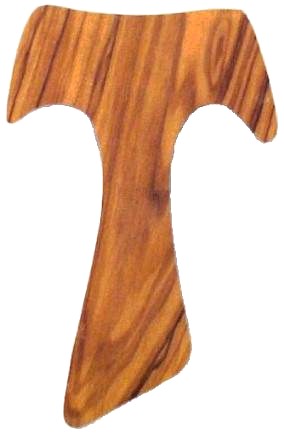 The TAU cross, a common symbol of the Franciscan Order is encountered all over Assisi.
The TAU cross, a common symbol of the Franciscan Order is encountered all over Assisi.
In the year 1215, Pope Innocent III called for a great reform of the Roman Catholic Church – the Fourth Lateran Council. The Pope opened the Council by recalling the Old Testament image of the TAU as taken from the Prophet Ezekiel (9:4):
‘Go through the city, through Jerusalem, and put a mark on the foreheads of those who sigh and groan over all the abominations that are committed in it.’ (NRSV)
“We are called to reform our lives, to come into the presence of God as righteous people. God will know us by the sign of the Tau on our foreheads.” (Wycliffe)
Although the Pope was probably recalling the Hebrew text of Ezekiel from a Greek translation of the Bible, the allegorical imagery as taken from the two different sources, was powerfully significant all the same.
In Old Testament times the image of the TAU, as the last letter for the Hebrew alphabet, meant that we were admonished to be faithful to God throughout our lives, until the last. Those who remained faithful were called the “remnant of Israel,” often the poor and simple people who trusted in God even without understanding the present distress or hardship in their lives.
This symbolic imagery, used by the Same Pope who commissioned the Order of Friars Minor a brief five years earlier, was immediately taken to heart by Saint Francis, who was in attendance at the Fourth Lateran Council.
The TAU, shaped like the letter “T” in the Greek alphabet could easily be identified with the cross of Christ and therefore, instead of signing his name, Francis would use the sign of the TAU as his signature and he painted in on the walls and doors of the places where he stayed. It was a further external gesture of his complete immersion in the passion of Christ. Francis honored and embraced the TAU cross as a reminder of his Crucified Lord and of his love for us. He instructed them to not only let that serve as a reminder, but also as an active symbol for them to be a walking crucifix in their lives.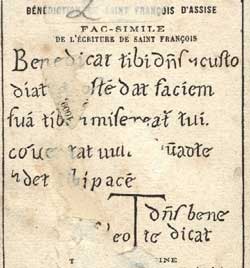
Saint Bonaventure in his Legenda Major 4-9 sees the connection between the text from the prophet Ezekiel and the mission of Francis: “…according to the text of the prophet, in signing the TAU on those men who cry and weep as a sign of their sincere conversion to Christ.”
Another connection of Francis with the sign of the TAU is his service to the lepers and the Brothers of St. Anthony the Hermit who administered the lazzaretos. From the 3rd century, St. Anthony is known for carrying the TAU cross and is often pictured as having a staff surmounted by a TAU and on their habit was sewn the emblem of the TAU. The TAU of the Antonians, servants of the lepers, reminded Francis of that special moment in his conversion when he embraced the leper and he was devoted to that symbol of the “love of Christ, who willed to be considered a leper for our sake” (Fioretti 25).
Today, followers of Francis, as laity or religious, would wear the TAU cross as an exterior sign, a “seal” of their own commitment, a remembrance of the victory of Christ over evil through daily self-sacrificing love. The sign of contradiction has become the sign of hope, a witness of fidelity till the end of our lives.
~~
エジプト十字架の秘密 二〇一三年七月二十五日
エラリイ・クイーン 訳 者 青田 勝
早川書房
1:2
「このTの印は宗教的の意味をもつものと思うのです」 「宗教的の意味ですって?」検死官がくり返した。 ぎっしりつまった傍聴人のなかから、牧師のカラーを着けた堂々たる老紳士が立ち上がった。「なかなか博学らしいお話のお邪魔をするのは失礼と思いますが──」彼は鋭くいった。「わたしは神の福音を説く牧師です。ですがTの印に宗教的の意味があるということはいまだかつて聞いたことかありません」 「牧師さん、教えてやんなされ!」とだれかが叫んだ。牧師はさっと顔を赤らめて坐った。
エラリイはほほえんだ。「学識高い牧師さんに反対しては相すまん次第ですが、その意味とはこうです。宗教上の象徴の中にTの形をした十字架が一つあるのです。これはタウ十字架(タウはギリシャ語のアルファベットの第十九番目の文字T)またはクルックス・コミッサと呼ばれるものです」 牧師はまた立ち上がって叫んだ。「そうです、それはほんとうです。しかしそれは元来キリスト教の十字架ではありません。異教徒の印だったのです」 エラリイはくすくす笑った。「おっしゃるとおりです。キリスト教の起こる前には何世紀もの間、ギリシャ十字架(上下左右各部分の長さが同じ十字架)が使用されていたのでしたね。このタウ十字架は、われわれの知っているギリシャ十字架よりも数百年前からあったものです。人によっては、男根崇拝の象徴がタウ十字架の起源であるともいいます……しかし要点はこうです」 エラリイは言葉を切って息をすいこんだ。人々は息を殺して待っている。やがて彼は鼻眼鏡を正して検死官を見ながらきっぱりといった。「その呼び名はタウ十字架、またはT十字架だけではありません。時によっては、それは──」彼はちょっと言葉を切って、静かに言葉を結んだ──「エジプト十字架と呼ばれるのです」
エジプト十字はアンクのことだから、T十字とは意味がズレるかも…
ちなみに、『アンク』とは、エジプト十字と言われる、古代エジプトで用いられた象徴図像。
護符や装飾の図柄として使用されています。
人の形のようでもあり、十字架のようでもある、不思議な形です。





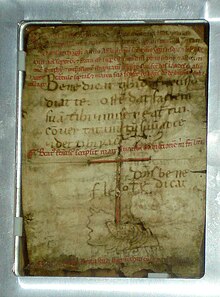
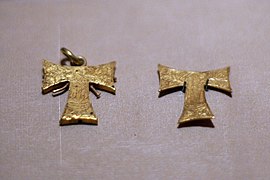
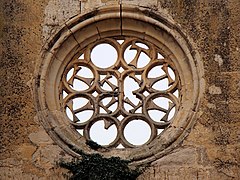


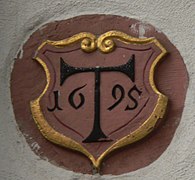



















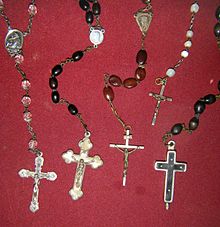



0 件のコメント:
コメントを投稿